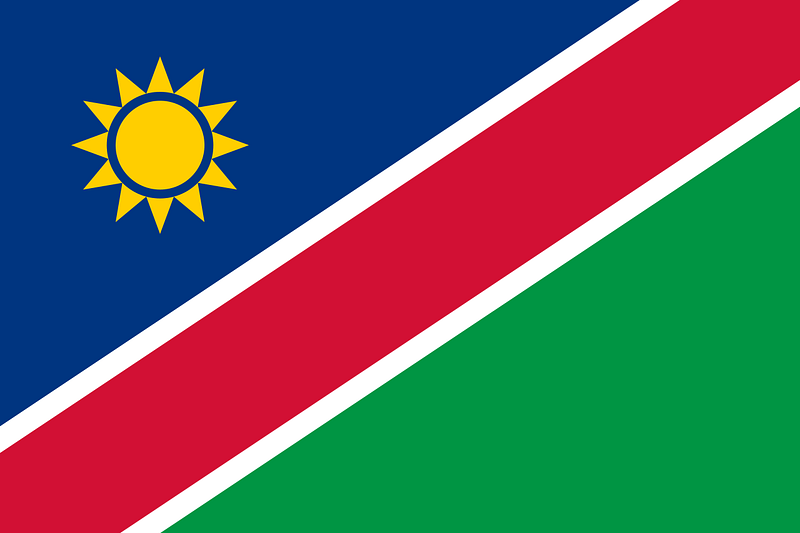This travel wiki page of Namibia will help guide travelers with quick and relevant information to consider when planning and visiting the country. It is difficult to find all the pertinent information you need on culture, safety, travel restrictions, and things to do, so we summarize it all here. If anything is stale or outdated, please let us know! Let’s dive in and explore more high-level information as a Namibia trip planner.
Posted October 15, 2022 – Last Updated May 28, 2024
Table of contents
National Information & Culture
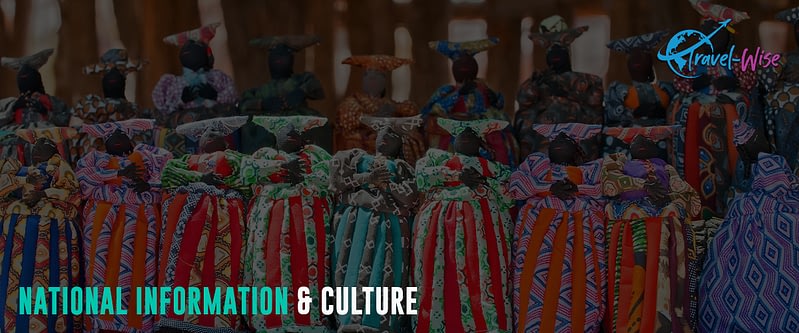
Officially, the Republic of Namibia is a country in Southern Africa with the Atlantic Ocean as its western border. Its capital and largest city is Windhoek, and the official currency is the Namibian Dollar (NAD). People can also freely use the South African Rand in Namibia, but NAD is not legal tender in South Africa.
Namibian culture and customs blend many ethnic groups fused with African and European elements, mainly German. Namibia has 11 principal ethnic groups, composed of smaller ethnic groups of the same language and traditions. Around half of the population is the Ovambo ethnic group, while the San are the original people of the Republic of Namibia. Other cultural groups include the Kavango, Herero, Himba, Damara, mixed-race and Rehoboth Baster, White Namibians (Afrikaner, German, Swedish, British, and Portuguese), Nama, Caprivian, and Tswana. Each ethnic group has its rich heritage and traditions. For example, Himba people wear few clothes and rub themselves with red ochre and fat to protect themselves from the sun, giving them a rich red appearance. Visiting their villages through organized tours is possible, but it should be done with sensitivity and respect for their traditions and lifestyles.
But what makes Namibia unforgettable are the remarkable encounters with nature and unique wildlife. Namibia also produces one of the world’s highest-quality diamonds.
When planning your trip to Namibia, it is worth checking the country’s official tourism website for more information, hints, and tips.
Special Travel Considerations

Each country and destination has rules and regulations that every traveler must consider. Hence, please consider the following factors for hassle-free travel to Namibia.
Covid-19 Policy
All COVID-19-related entry requirements into Namibia have been removed. Visitors can now enter Namibia without presenting a vaccination certificate or a negative PCR test upon arrival. Thus, Namibia is an ideal travel destination post covid.
Travel Insurance
Travel insurance is not mandatory but highly recommended for all travelers to Namibia. It should cover all emergency medical expenses, including COVID-19, repatriation, and evacuation. Travel insurance can protect you against the inconvenience of injury, medical emergencies, theft, and flight cancellations. In addition, it is comprehensive protection in case anything goes wrong with your trip.
Visa Information
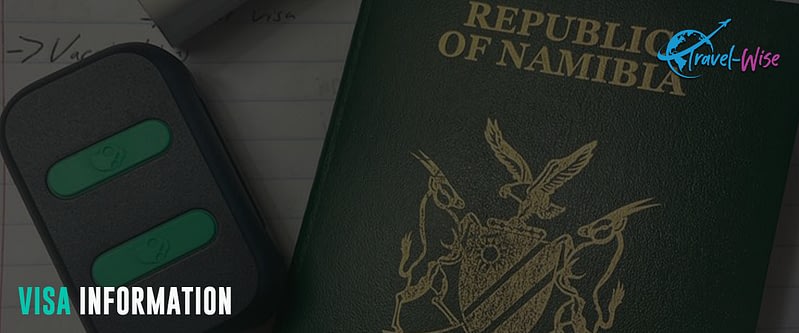
Nationals from 55 countries can enter Namibia without a visa for a maximum stay of 3 months within a year. On the other hand, Russian citizens can stay 90 days within any 180 days.
Namibia also grants visas on arrival to nationals of 59 countries arriving at Hosea Kutako International Airport or Walvis Bay Airport for a maximum stay of 3 months. Similarly, they can also obtain visa-on-arrival from Walvis Bay Harbour and the border posts of Trans-Kalahari, Impalila Island, Katima Mulilo, Oshikango, Mohembo, Ariamsvlei, Orangemund, Noordoewer, and Ngoma. The visa-on-arrival fee is N$1000, or approximately $67, and it is meant for tourist purposes only.
Meanwhile, tourists from countries not included in the list must check with the nearest Ministry of Home Affairs, Immigration Safety and Security, and Namibian missions to apply for their appropriate visa.
Visitors to Namibia must have a valid passport for at least six months after entry and at least three blank pages for entry and exit stamps. They must also have a return ticket. Lastly, all guests must have an appropriate visa, except those nationalities with visa exemptions.
Popular Attractions
Namibia is a country rich in natural beauty. Visiting the country is a dream experience, with its endless horizons, picturesque views, and abundant wildlife encounters. Among Namibia’s many natural attractions, the destinations below are a must-see.
Etosha National Park

Etosha National Park is the number one tourist destination in Namibia. It is the oldest and most significant game park to spot various wildlife, offering visitors a safari experience. The park is home to 114 large and small mammal species, more than 400 recorded bird species, and reptiles, including several threatened and endangered species of the black rhinoceros.
When exploring Etosha, expect to encounter many lions, elephants, giraffes, zebras, wildebeests, and a host of antelope species, including springbok, oryx, kudu, and impala. The harder-to-spot leopard and cheetah are also present in the park. This wildlife is best spotted in the waterholes where they come to drink.
The Skeleton Coast
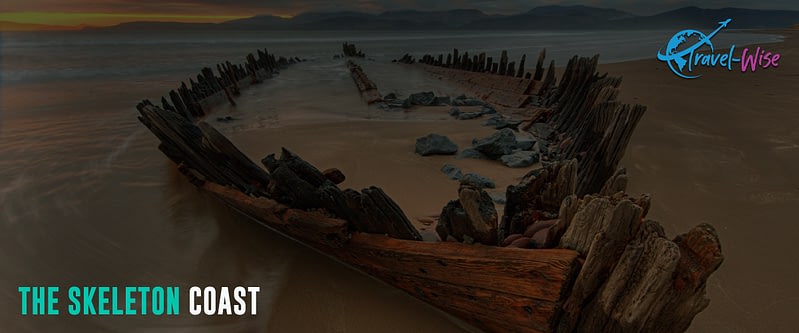
The Skeleton Coast National Park’s dense coastal fogs and cold sea breezes, caused by the cold Benguela Current, add to the region’s aura of mystery and inaccessibility. These conditions, among others, may have caused numerous shipwrecks to sweep the coastal area, which is also littered with bones and other debris.
Regarding the Ugab River, the park’s southern section is open to four-wheel drive vehicles. The northern part is off-limits to cars and can be reached by a fly-in Safari. A must-visit tourist attraction in the park includes a shipwreck at the South West Seal viewpoint, Huab lagoon, and the collapsed oil drilling rig.
Fish River Canyon
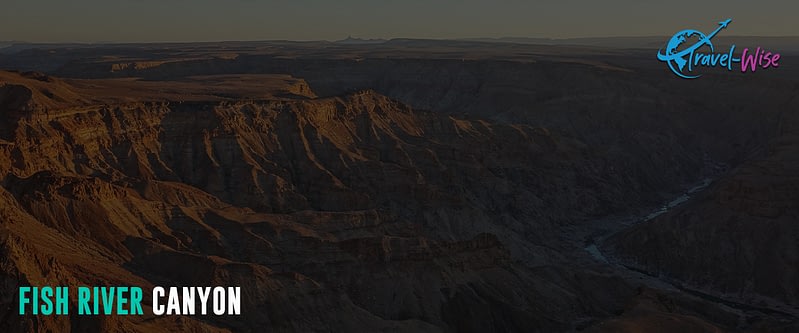
Fish River Canyon is the second-largest canyon on Earth. It is located in the southern part of Namibia’s longest river and features a gigantic ravine of 161 km long, up to 27 km wide, and almost 550 meters deep. The canyon is like a masterpiece that offers visitors, photographers, and backpackers the most serene and stunning landscapes. To fully explore the canyon, it is possible to join a hiking trip between May and September. Permits are necessary to do so. However, no licenses are issued beyond these periods because of extreme heat and possible flooding.
Damaraland and Kaokoland
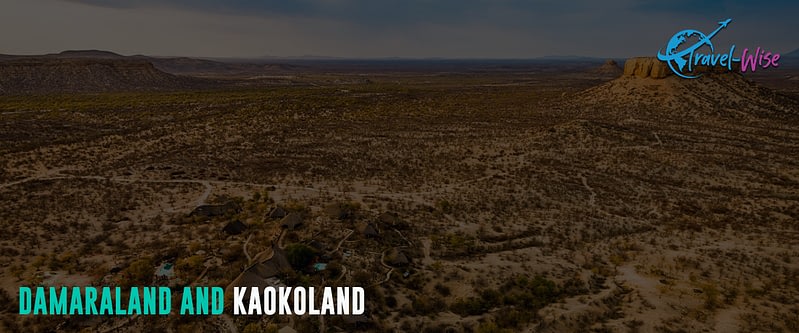
Damaraland is home to one of the UNESCO World Heritage sites, Twyfelfontein, which symbolizes the rich cultural heritage of the San/Bushmen people in the form of rock engravings and paintings. Here, you will come across the largest population of desert elephants, rhinos, lions, oryx, springbok, and hundreds of bird species. This area is close to Etosha National Park and en route from the Skeleton Coast.
Kaokoland is a special place situated in the far northwest of Namibia, alongside the banks of the Kunene River. It is home to the Himba ethnic group, the last true nomads of Namibia. Across the rugged terrain of Kaokoland, visitors will find beautiful Epupa Falls and Ruacana Falls along the Kunene River. Like Damaraland, you will encounter elephants, black rhinos, zebra, springbok, oryx, and giraffes.
Namib-Naukluft National Park

The Namib-Naukluft National Park is one of the world’s largest conservation areas, stretching from the plateau of central Namibia to the vast basin of the Namib Desert. You will find Sossusvlei and Sesriem, Namibia’s best-known and spectacular natural sites. Sossusvlei views an endless sea of rust-orange dunes, a clay pan (Deadvlei) surrounded by dunes, and its knotted ancient trees. The highest dunes in the world are also found here. On the other hand, Sesriem is the gateway to the wilderness of the Namib Desert, characterized by a small canyon shaped by the Tsauchab River.
Swakopmund & Walvis Bay
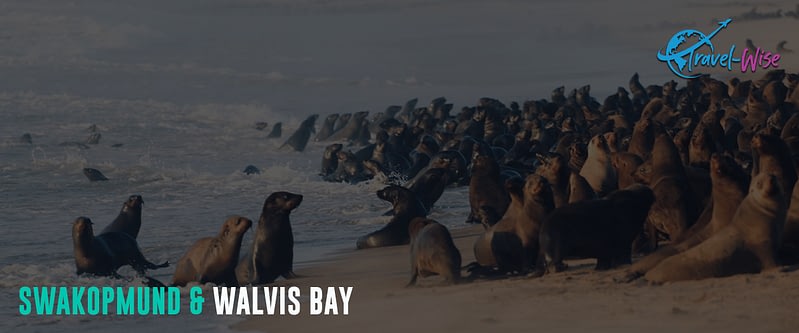
Swakopmund and Walvis Bay are the adventure capital of Namibia. The resort town on the central coast of Namibia, Swakopmund, is 30 km from Walvis Bay, the country’s main seaport. Here, visitors will not run out of things to see and activities to try and do. Whether you explore the high dunes of the Namib Desert having sand boarding, four-wheelers, paragliding, skydiving, and camel riding or simply appreciating the elegant art of German architecture, or on the sandy beaches, Swakopmund offers something memorable for everyone. Heading to Walvis Bay is also worth the visit. It is rich in plankton and marine life, attracting many southern right whales. It is also where visitors will find flamingos, eating, sleeping, and living on the coast of Walvis Bay all year long.
Kavango & Zambezi
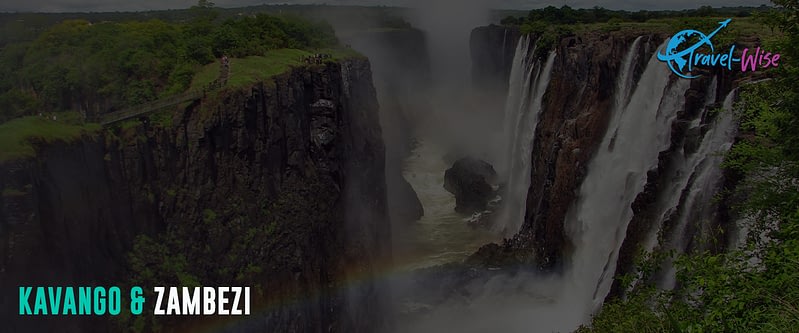
The former Caprivi Strip is now divided into the Kavango and Zambezi regions. Because of the Kavango (Okavango) River, Kwando (Linyanti) River, and Zambezi River, visitors will find Namibia’s lush and untouched wilderness in Caprivi Strip and abundant wildlife, birdlife, and fish species. These regions also have several national parks: Khaudum National Park, Bwabwata National Park, Mudumu National Park, and Nkasa Rupara National Park.
Kalahari Desert
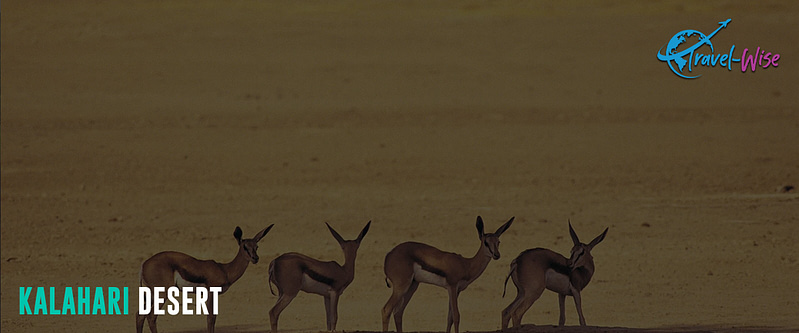
The Kalahari Desert is home to the San ethnic group of Namibia. Visiting here will give you insights into the nomadic and hunter-gatherer lifestyle of the San/Bushmen culture and their sedentary lifestyle in the modern world.
Despite the arid conditions, the Kalahari Desert in Namibia is home to various animals and plants that survive in this harsh weather. In the springtime, the seemingly endless desert sand transforms into an area of blossoms, flowers, and grass blankets.
Sperrgebiet National Park
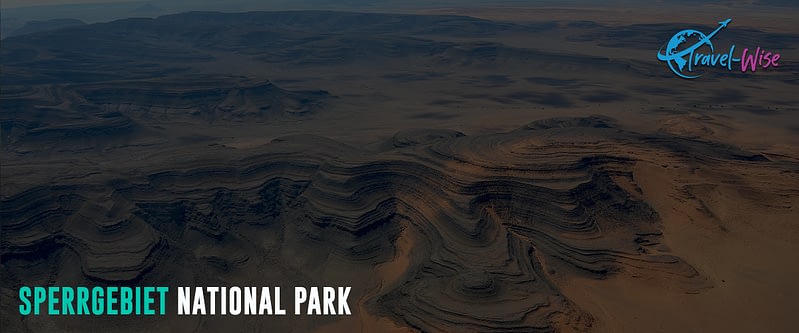
The Tsau ǁKhaeb National Park, formerly known as the Sperrgebiet National Park, is a diamond mining area in the Namib Desert of southwestern Namibia. The Sperrgebiet is a biodiversity hotspot in Namibia and home to endemic flora and fauna. Out of 776 plants found, 234 are endemic to Sperrgebiet. Animals and bird species residents in the Sperrgebiet include the gemsbok, springbok, brown hyena, African oystercatcher, black-headed canary, and dune lark.
Spitzkoppe
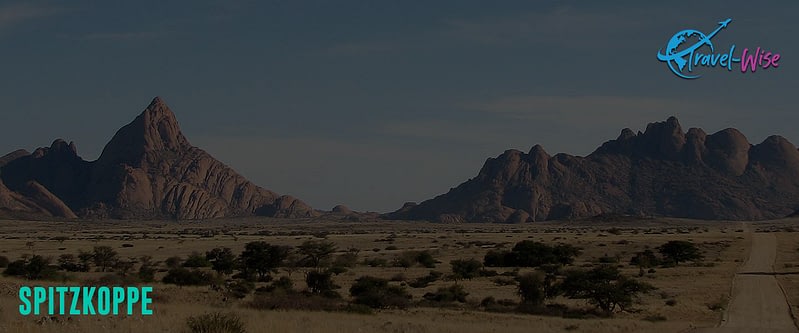
The Spitzkoppe is a group of bald granite peaks between Usakos and Swakopmund. It is one of Namibia’s most photographed and painted granite outcrops, with the highest elevation of 670 meters. These granite rocks are intrusive and around 120 million years old. Visitors can see many examples of San/Bushmen artwork carved and painted on the rock in the Spitzkoppe area. The Spitzkoppe Mountains were also the filming location for 2001: A Space Odyssey in the “Dawn of Man” sequences. What makes the Spitzkoppe special is the presence of exciting plants, birds, and other wildlife in the surroundings.
Primary Spoken Language(s)
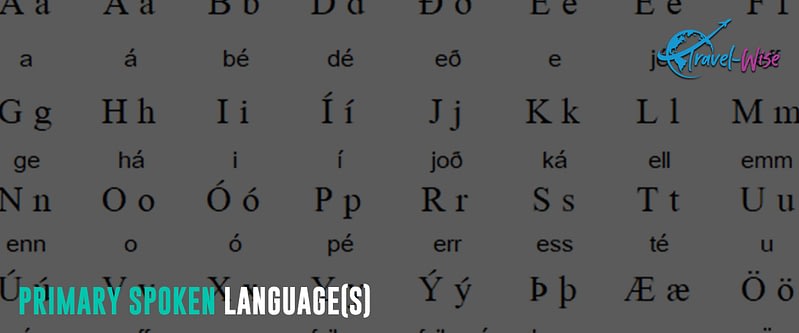
Although only 3% of the population speaks English as a home language, Namibia’s sole official language, almost half speak Oshiwambo (49%). It is followed by Khoekhoegowab (11.3%), Afrikaans (10.4%), RuKwangali (9%), and Otjiherero (9%). Despite the numbers, the most widely understood national language is Afrikaans, the country’s lingua franca. Afrikaans and English are used primarily as second languages reserved for public communication.
Safety Concerns
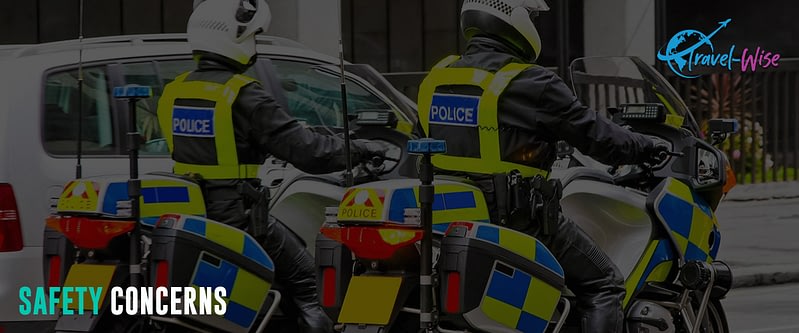
Namibia is one of the safest countries in Africa, ranking 56th out of 163 countries on the 2023 Global Peace Index. As of November 27, 2023, Namibia has a Level 2 travel advisory from the US Department of State.
Namibia has a low crime rate compared to other African countries. Nonetheless, as a general rule, visitors should always apply common sense when traveling to foreign countries. Be mindful of your surroundings. Do not show signs of wealth, and be vigilant, especially at night. When in a larger crowd like the capital city of Windhoek, be aware of pickpockets and be watchful when withdrawing cash in ATMs. Robberies, muggings, and theft are common crimes, especially in the downtown shopping areas with large crowds of travelers.
Road Safety
There are reports of taxi drivers and their associates robbing passengers in Namibia. Hence, do not hail taxis from the street to reduce the risk of taxi robberies, particularly in Windhoek. Use taxis with the Namibia Bus and Taxi Association logos. Ask your hotel, guest house, or tour operator to recommend a reputable taxi company. Also, do not enter townships at night unless you are with someone with local knowledge.
Visitors to Namibia are allowed to self-drive. While it is generally safe, there are critical rules to follow for road safety.
First, never drive at night. Wildlife is everywhere and can appear out of seemingly nowhere, which can cause severe accidents for both humans and wildlife. Thus, it is best to know your driving distance and always arrive at your next destination before sunset.
Second, always have at least one or two spare tires in your rental car. The high temperature and gravel road can quickly wear your tires, and it is best to have a spare anytime you need one.
Visitors should also have their insurance and emergency phone numbers on hand. Lastly, always fill your gas tank whenever you see a gas station.
Health & Malaria
Most regions of Namibia are malaria-free. However, we cannot completely rule out malaria in the northern and northeastern areas like Etosha National Park and the Zambezi Region (Caprivi Strip), especially during the rainy season between November and June. As always, prevention is better than cure. Therefore, travelers should take prescription medicine to prevent malaria. Consult your doctor about this. In addition, mosquito repellants and sleeping under mosquito nets are necessary when traveling to these regions in Namibia.
Safe Safari Experience
Like humans, animals should be respected and treated well. Hence, specific rules must be followed when in wildlife territory.
- Only get out of the car at designated spots and, after surveying the surroundings, are safe.
- Do not attempt to touch or feed wild animals
- Animals always have the right of way first
- Avoid noise and loud music. Do not disturb or startle animals near the road.
- Do not keep food in your tent when camping; the smell can attract animals such as hyenas.
Budget Considerations
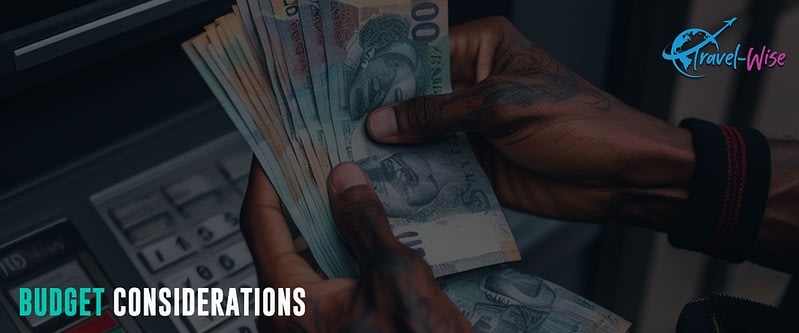
Namibia is one of the cheapest countries to travel to on a budget in Africa, depending on your chosen method of transport and accommodation.
Accommodation
Many campsites in Namibia cost between $6 and $10 per person per night. However, after long days of driving around Namibia and staying on campsites, it is worth sleeping and staying in a comfortable hostel or, eventually, a hotel. Depending on the location and season of your travel, a hostel dorm bed starts at $15, while private rooms are at $25. There are also budget accommodations that cost around $30 per night. Additionally, an average hotel or guesthouse costs $55 per room per night, and a four-star hotel at $100. Most hostels, guest houses, and accommodations serve complimentary breakfast in Namibia.
Food
Namibian cuisine’s main staples are corn, beans, root crops, and meat. Famous dishes include oshithima, oodhingu (dried meat), kapana, and omboga. Adventurous travelers who want to try a unique Namibian delicacy may also try the crispy omagungu (dried mopane worms).
Namibian foods are generally inexpensive. Travelers can get to-go meals between $3 and $4. Expect to pay around $5 for a cheap meal in a local restaurant serving typical Namibian cuisine. Visitors can also dine in a mid-range restaurant for between $12 and $15.
Meanwhile, travelers who want to go grocery shopping and cook can expect to spend around $45 weekly on basic staples like pasta, rice, seasonal produce, and meat.
Attractions and Transportation
Namibia’s attractions focus more on the outdoors and wild safari, with varying admission fees for local and foreign visitors. For example, foreign guests’ admission fees to almost all national parks are around $8.20, while local visitors pay $2.75 for adults. The Namibian Wildlife Resorts also collects usage fees for every vehicle entering the park’s premises, starting at $2.75 for cars with a capacity of 10 people and below.
On the other hand, a one-way ticket on local public transportation in Windhoek costs $0.60. But as destinations and attractions are very far away, it is always a wise decision to rent a car in Namibia, preferably a camper. A fully equipped 4×4 camping truck costs around $75 daily. The truck already includes camping equipment suitable for two persons and insurance. Of course, you should not forget the fuel cost, as going on a Namibian wild safari takes a long way.
Average Two-Weeks Cost
The best way to explore Namibia on a budget is by renting a car, staying on campsites, and cooking food. Campsites are available in many beautiful wild locations and offer shops for food and necessary supplies.
Considering the above figures, a budget traveler in Namibia can live with $60 daily or $840 for two weeks. The budget covers staying in campsites, preparing and eating camping foods, and renting a camper truck. On this budget, travelers do a few wild safaris independently without a local guide.
Meanwhile, travelers can comfortably stay in hotels, camping lodges, and guest houses and fully immerse and explore Namibia on a mid-range budget of $150 daily or $2100 in two weeks. The budget includes dining out at local and mid-range restaurants, renting a 4WD vehicle, and doing paid tours and activities.
Lastly, travelers can enjoy luxury in Namibia for $250 daily to $3500 for two weeks. It covers the cost of staying in four-star hotels or park resorts, dining anywhere, vehicle rental, visiting all attractions, and availing themselves of all the paid tours and activities they want. So, for them, the sky is the limit for travel.
Customs And Import Restrictions
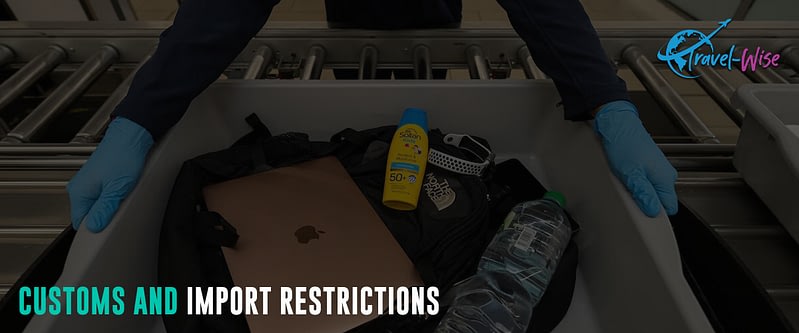
The Republic of Namibia does not have particular travel customs and import restrictions for arriving passengers. Nevertheless, visitors should be aware of some prohibitions for a hassle-free trip.
Do not bring prohibited goods such as narcotics, illegal drugs (in any form), automatic weapons, military weapons, unnumbered weapons, poison, and toxic substances into Namibia. Entry of firearms and endangered species is restricted unless you have the necessary permit. Failure to comply may result in penalties or imprisonment.
However, visitors can have the following duty-free allowances and entitlements: 400 Cigarettes; 50 Cigars; 250 grams of Cigarette or Pipe tobacco; 2 liters of wine; 1 liter of spirits or other alcoholic beverages; 50 ml perfume; 250 ml toilet water; and other new or used goods maximum of 1250NAD. Please note that persons under 18 are not entitled to tobacco and drinks allowances.
Visit their official web page for detailed customs, imports, and excise rules. Visitors can also check out this site for Namibia customs and import rules.
Climate Considerations

On average, Namibia experiences 300 days of sunshine annually and is the aridest country in Southern Africa. Namibia has mostly a subtropical desert climate and is at the tropics’ southern edge. The Tropic of Capricorn more or less divides the country in half.
However, extreme contrast in temperature can be experienced relative to the season and geographic location. For instance, the Namib Desert encounters warm to hot days in the winter months (from June to September), but temperatures can drop considerably at night and get freezing.
In Namibia, the summer months are long, from October to April. Average temperatures range from 20 °C on the coast to 35 °C in the central region. On the other hand, temperatures in the southern part of Namibia, particularly in the Namib Desert, can reach more than 40 °C. Summer is also the rainy season in Namibia and is divided into a short and a primary rainy season. The short rainy season is between September and November – while the primary rainy season occurs between December and April.
Winter days from May to September are pleasant. However, temperatures can become quite cold, dropping below zero mid-winter. The average daytime temperature during winter is between 18 °C and 22 °C.
The Coastal region is cooler because of the cold Benguela current from the Atlantic Ocean. In addition, the coastal area is free from rain for most of the year, and frequent dense fog is common.
Primary Transportation Options
Getting around Namibia can be done through air, land, and rail transport.
Air
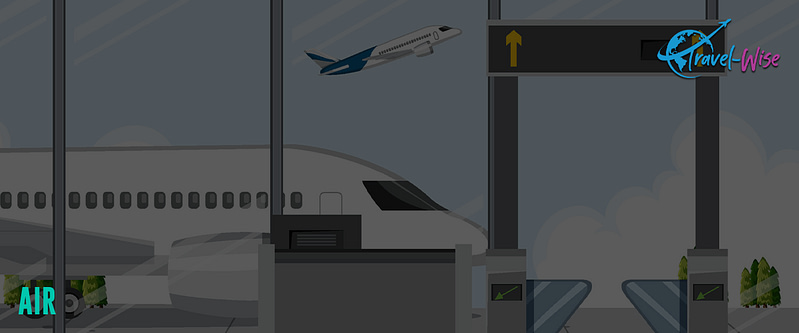
Twenty-nine airports connect the country with regular and chartered flight services. Windhoek Hosea Kutako International Airport, Walvis Bay Airport, and Eros Airport are three international airports. Although costly, air travel is the quickest and easiest way to explore Namibia. Through this, more attractions can be seen in a short period.
Train

The Trans-Namib Railways connect the most significant towns on the first and second-class carriage. It includes light refreshments for some services. But be ready for a long journey as the trains stop at every post.
For luxury travel, the Desert Express that runs between Swakopmund and Windhoek is for you. Prices are high, but it offers comfortable travel, including a three-course dinner and overnight accommodation. Also, this journey includes several stops, allowing travelers to watch lion feedings, see the Namib Desert, walk in the dunes, and admire the stars.
Land
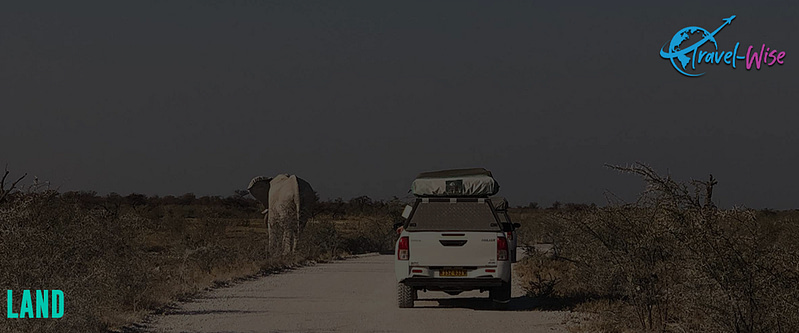
An excellent network of well-maintained highways runs the length of the country. Thus making it best for visitors to get around Namibia by land transport. However, expect some bumpy roads and potholes when driving for safari.
Car Rental
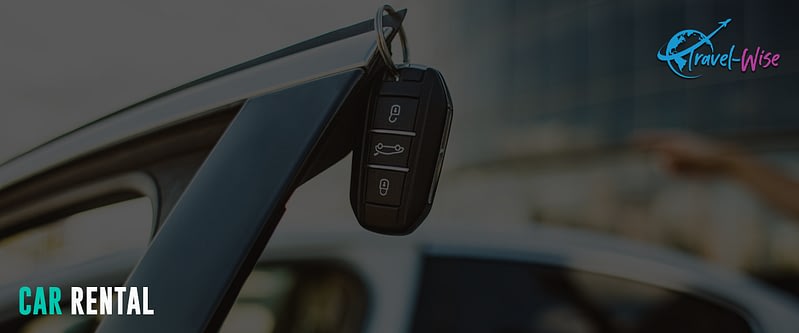
Renting a car is the best and easiest to explore Namibia. While self-driving is safe and recommended, visitors must take time to plan their road itinerary. It is because 80% of the roads in Namibia are gravel. Thus, driving speed is slower, and it takes time to reach your destination. Consider renting a sturdy 4×4 vehicle for the off-beaten paths’ added safety and power benefits. Rental rates vary relative to the season and the add-ons a visitor avails of, like camping tents and gear, averaging at $75 for a camping truck with gears and tents. Also, driving in the country takes place on the left-hand side of the road.
Bus

There is no official public bus transport system in Namibia. However, local buses operate and connect almost all the major towns and cities.
Intercape is the most reliable bus option in Namibia. Their bus fleets are generally in good condition, comfortable, and air-conditioned. However, schedules are not daily, so checking for their routes and timetables is best.
Start Trip Planning
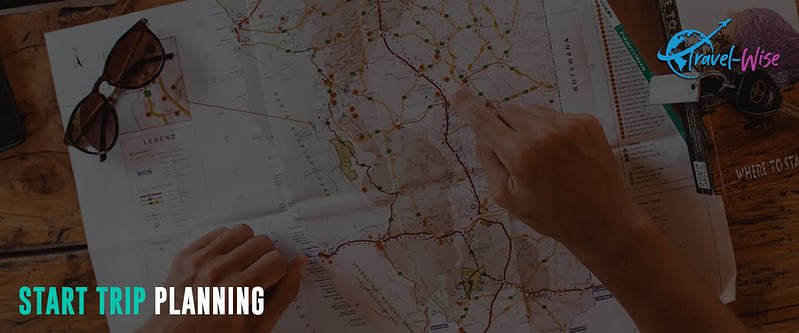
Travel-Wise is made from the ground up to help people travel more, break down the barriers that make it challenging to get going, and start your journey as painlessly as possible. Bookmark our other Country Guides to help kick-start your research for future travels. We also offer templated itineraries from our staff and community that help serve as a building block for your trip plans. Alternatively, we also utilize AI to offer a way to generate itinerary ideas. It saves much time just getting you up and running with a template. From there, you can use the trip planner to create your customized itinerary, invite friends and family for collaboration, find others from Travel-Wise to join the trip, book and track important information, journal, and share your experiences at the end or along the way!

